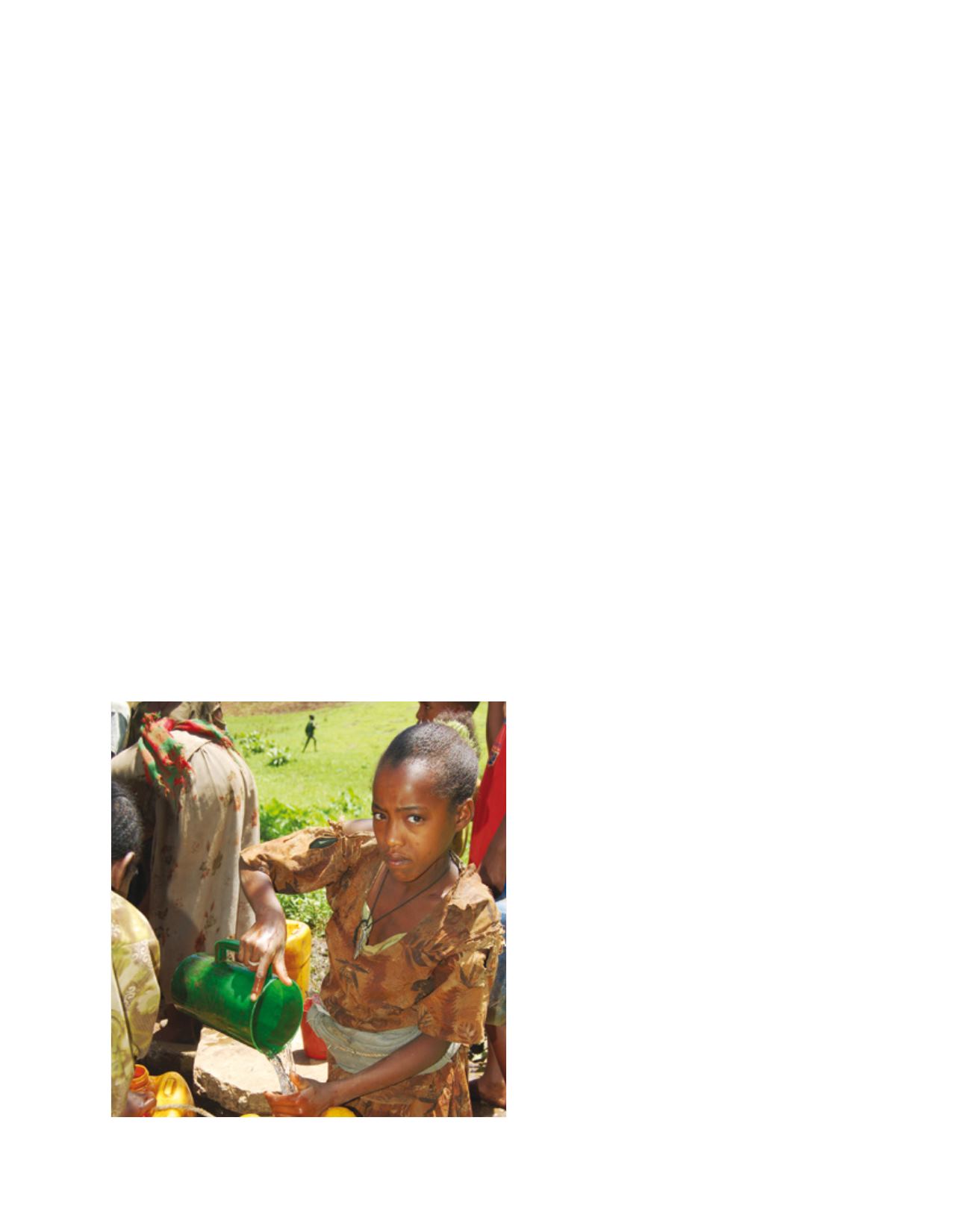

[
] 241
W
ater
C
ooperation
, S
ustainability
and
P
overty
E
radication
for the needs of developing countries was conducted at
Helsinki University of Technology (1972-74), followed
by six courses in 1979-1992 at Tampere University of
Technology (TUT). Participants in the latter courses
wrote their MSc theses mainly in their home countries.
A special BSc civil engineering programme was also run
for 14 Namibian students at TUT before the country
gained independence.
Current development cooperation supported by the
Finnish Government in the water sector uses various
forms and instruments. In addition to the bilateral activ-
ities described below, Finland supports many activities
in the sector through international agencies, academia
and non-governmental organizations (NGOs).
Collaboration projects
The Finnish Government started to support bilateral
projects after sending out individual experts in the late
1960s and early 1970s. The first long-term project was
in Southern Tanzania in 1970-1993. Such projects have
also been undertaken in Sri Lanka, Kenya, Viet Nam,
Egypt, Mozambique, Nepal, Namibia, Ethiopia, Sudan
and Southern Sudan.
In the 1980s these projects started to change from
construction orientation (supply-driven) to expert-
based and development activities (demand-driven).
Gradually, sanitation and hygiene education were
included in the projects, and policy coherence between
water, education and health became integral to the
operations. The main focus has been on rural coop-
eration, but since the 1990s urban water supply and
sewerage have also been supported in Viet Nam, Egypt
and Mozambique. Since 2007 urban projects have
focused on small towns in Palestine and Viet Nam.
Ethiopia
After the fall of the communist military regime in
Ethiopia, a Finnish-supported water and environ-
ment project was conducted in the Amhara region
(1994-2011) and replicated in the Benishangul-Gumuz
regions (2008-13). Both aimed to increase capacity
and community ownership of community-based water,
sanitation and hygiene (WASH) structures. These were
mainly shallow wells and spring protections, with
Community-Led Total Sanitation as the main channel
for sanitation support. Thereafter the Community-Led
Accelerated WASH programme institutionalized the
community managed project (CMP) model, which has
become accepted as one of the national financial models
for rural WASH.
CMP has solved the issue of managing local funding
and optimal allocation of roles and responsibilities in
the WASH process. The investment funds needed for
construction are channelled to communities by a local
microfinance institution. The CMP approach is also
used in projects implemented and financed by the
Ethiopian Government as well as the United Nations
Children’s Fund (UNICEF) in some regions. The
approach has proved successful and has gained inter-
Since the mid-1960s, the water sector – particularly water supply
and sanitation – has been one of the major targets of Finnish devel-
opment policy and cooperation. Official development assistance
(ODA) increased in the 1980s and peaked in 1991 at 0.8 per cent of
gross national income. This upward trend was followed by a deep
trough in the early 1990s which cut resources by half and was later
followed by an instrumental shift from project-based aid towards
sector-wide approaches where funds were increasingly channelled
through multilateral trust funds. At this juncture some innovative
and functional ODA instruments also ceased to exist, such as univer-
sity collaboration.
In the early part of the millennium the water sector accounted
for some 2-5 per cent of bilateral cooperation activities, but its
share increased steeply in 2007-2011 as a result of the policy shift.
Currently, water sector ODA is almost EUR 60 million a year or
around 5 per cent of total ODA; in 2012-2016 the water sector will
be the single largest sector of cooperation in the main partner coun-
tries. The focus has also shifted to multiple use of development
cooperation instruments and, geographically, to fragile and post-
conflict countries.
Finnish development cooperation in water services
Official water sector development cooperation supported by the
Finnish Government has progressed gradually based on lessons
learned. In Eastern Africa many new independent governments
had ambitious plans and policies including the free water policy.
Although understandable based on the political passions of the day,
this policy soon proved unrealistic, though it took decades for many
countries to abandon it.
In the late 1960s and early 1970s individual experts were
stationed at the national water authorities of recipient countries in
Ethiopia, Kenya and Tanzania. A postgraduate programme designed
Improved water supply in the Amhara Region of Ethiopia
Image: Harri Mattila


















